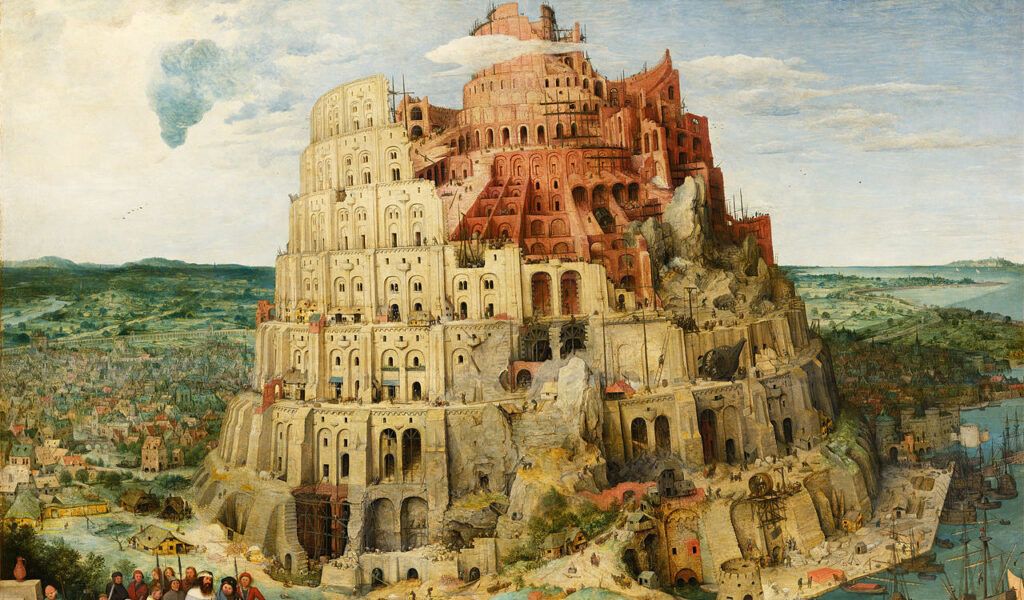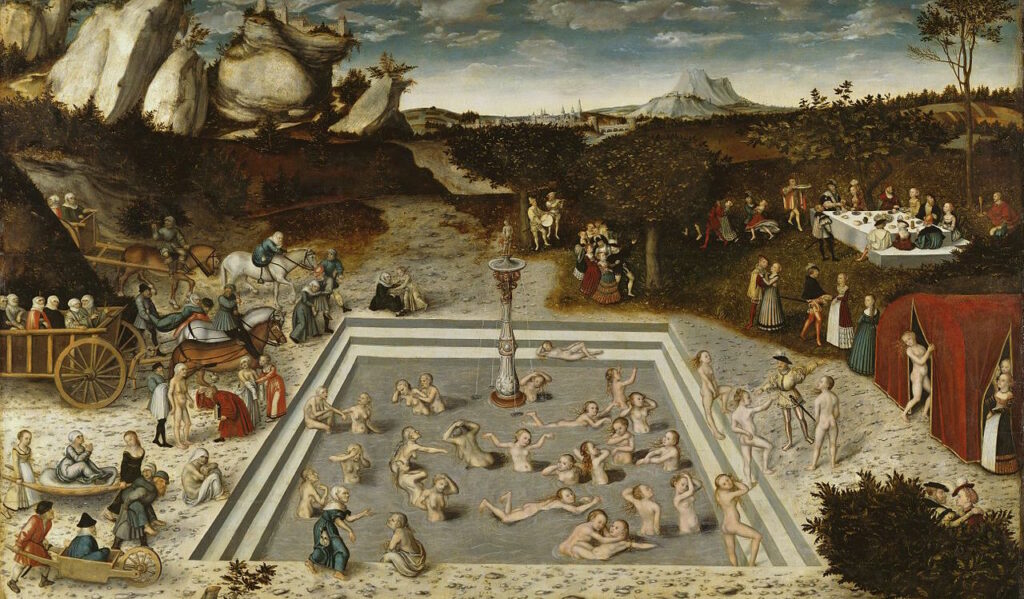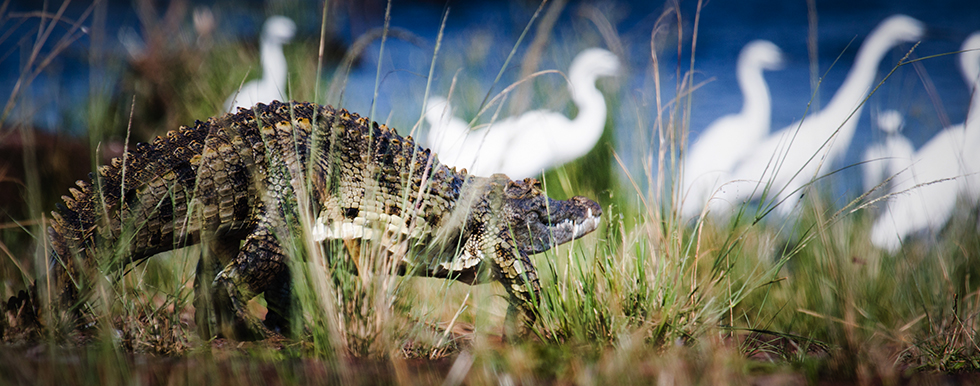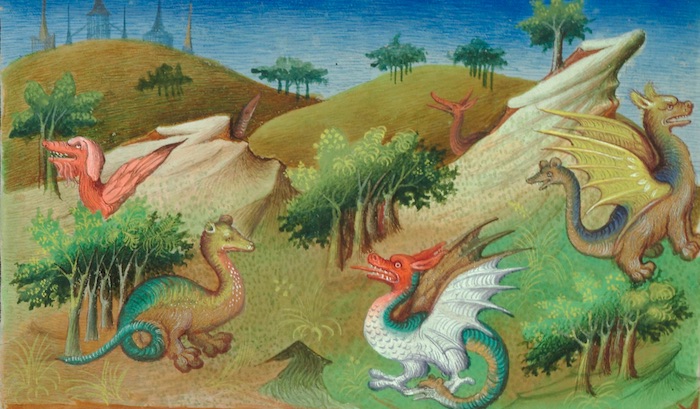Last month we started our trip through The Travels of Sir John Mandeville, and this week we’re going to finish! As before, Sir John Mandeville was an English knight who claimed to have traveled broadly in the mid-14th century. He reports soldiering in the service of the Fatimid Caliph in Cairo and for the Emperor of the Yuan dynasty in China, among many other exploits. The actual extent of his travels is unknown, but along the way he picked up some really fantastical details, some in the vein of ‘I heard it from a guy who heard it from a guy’, and others of the ‘I totally saw this, you have to believe me’ variety. Fourteen of the most gameable of these details are below!
This post is brought to you by beloved Patreon backer Justin Moor. Thanks for helping keep the lights on! If you want to help keep this blog going alongside Justin, head over to the Patreon page – and thank you!

Babel (Mesopotamia). The wastes where the Tower of Babel once stood are full of dragons and venomous serpents. The ruins of the tower and the town around it yet remain, a square six miles on a side. There may yet be unplundered treasures here, guarded by the monsters of the wastes. And there will certainly be plenty of unlooted corpses of earlier adventurer-archaeologists!
Abkhazia (Georgia). There is a region here three days’ travel in circumference that is entirely dark. It was created by God in response to the actions of an emperor of Persia (presumably Shapur II, who reigned 309-379 A.D.). This Zoroastrian emperor chased Christians from his kingdom with a huge army. He had almost caught up with the fleeing Christian refugees when God enveloped the Persian army in total darkness. The Persians were trapped, unable to find their way out! They still live in that darkness and always well. People who live nearby still report the sounds of men and horses coming from this black realm. By Mandeville’s time, it had been a thousand years since the reign of Shapur II. Who knows what kinds of monsters the Persian soldiers might have become in that time?
The Castle of the Sparrowhawk (Armenia). In this castle there is a sparrowhawk and its caretaker, a faerie maiden. If anyone can sit by the sparrowhawk and keep it awake for seven days and seven nights, the faerie will grant him one wish. But if you fall asleep while watching the sparrowhawk, you will be whisked off to another realm and never seen again! Mandeville tells of three instances where someone completed the challenge. In two, the victors asked for gold and got it. In the third, the victor asked to have sex with the faerie woman. She was so insulted, she cursed his realm with war for nine generations.
Tabriz (Iran). By this beautiful city there is a hill of salt, and anyone can take as much of this valuable substance as they like.
Yazd (Iran). This is the noblest city in the Persian Empire. But any Christian who settles in the city soon dies of natural causes, and no one knows why.
Ormuz Island (Iran). The island is full of adamant, a rock that has properties like a magnet. If any ship with iron nails in it comes near the island, it is drawn against the rocks and can never get free. There are vegetation-covered islands here that once were ships. They became trapped and overgrown. Consequently, the people of this island sail in ships of perfectly-fitted wooden planks without nails or iron straps.

Kollam (India). At the foot of a mountain near the city there is a well whose water flows underground from the Garden of Eden. Its taste and smell change hourly, but are always redolent of spices. If you drink from it three times on an empty stomach, you’ll be cured of all diseases forever. Mandeville says he drank from it, and has felt healthier and younger every year since. He is confident it will take the direct intercession of God to kill him.
Mylapore (India). This is the location of the tomb of the Apostle Thomas, who went east after Pentecost to preach in India. His body has not rotted, and the people of Mylapore keep his right arm outside his casket. This is the arm that bears the finger he stuck in the wounds of the the resurrected Christ to prove to himself the truth of what he was seeing. The Mylapooraans use the arm to judge disputes. Each side writes their case on a scroll. They both place their scroll in the hand of St. Thomas. The hand casts away the wrong suit and retains the correct one.
India. There is a sea entirely of gravel and sand that flows and crashes and has waves exactly as a real sea does. The locals catch fish in it that are shaped differently than the fish of seas made of water. The sea is fed by a river that runs not with gravel but with precious stones flowing directly from the Garden of Eden. Three days a week, this river runs fast, but four days a week it stops so people can wade in and gather the gems. Further back in the hills there is a forest of trees that sprout at sunrise, grow tall until midday, then shrink back into the earth by sunset. These trees produce fruit, but the locals are too scared to try it.
Sri Lanka. There are ant hills the size of regular hills tended by ants the size of dogs, and the hills are made all of golden sand. These ants hate people and will kill you if you trespass on their territory. Still, there are two ways to steal some of their gold. The first is to wait until the hottest weather. The ants can’t stand the heat and will remain underground while you load up their precious gold. The second is to attach bags to horses with the mouths of the bags near the ground. You then let the horses wander around the golden ant hills. The ants don’t care about horses, and in fact have a compulsion to fill open holes and crannies with sand and leave nothing empty. So the ants fill up the bags with gold and then you recall your horses.
Sri Lanka. After Adam and Eve were expelled from the Garden of Eden, they wept atop a high mountain here for a hundred years. Their tears collected in a bowl and formed a deep lake, and you can still visit it. There are precious gems in the mud at the bottom. The waters are infested with crocodiles, snakes, and huge leeches, which should keep the gems safe. But the locals rub themselves with lemon juice, which keeps the critters from bothering them, and they swim down to the bottom to collect the gems.

Borneo. Bamboo grows here! Among the roots of the smaller species, people find magic gemstones. As long as you’re carrying one of these stones, iron can’t hurt you. The warriors of Borneo use these stones in battle, but their enemies make crossbow bolts without iron heads to kill them anyway. This could be a reference to siliceous concretions found in the joints of bamboo. But when the fantastical stuff in Mandeville happens to line up with reality, it could very easily just be coincidence.
Yangtze River (China). While the rest of China is inhabited by normal-sized people, the banks of the Yangtze boast a race of pygmies two feet tall. They marry at a year and a half old and die at 7 or 8. They are normally-proportioned, know right from wrong, and make wonderful garments out of silk and cotton. Truly bizarrely, they are locked in an unending war with the Yangtze’s cranes, which are much larger than these pygmies. If the PCs help the pygmies in their bird war, the little people may reward them with fine clothes.
Possibly the Korean Peninsula. A fruit about the size of a gourd grows here. When you open it, you find a small animal inside, like a lamb in the womb. You can eat both the animal and the fruit.

Optional Context: The Travels of Sir Johhn Mandeville is a weird book. Obviously, it’s unknowable whether ‘Sir John Mandeville’ is actually the author’s name, whether he was a knight, or even English! And despite some stunning accuracies (and some real howlers), it’s not clear that Mandeville ever actually traveled widely. Almost all the stuff in his book is present in earlier travelogues. If he had a good sense for avoiding other people’s errors, it’s possible Mandeville may have gone no farther than Jerusalem – or even a university library.
Moreover, the book is striking – absolutely stunning – for advocating religious pluralism. This flies in direct opposition to the medieval Church’s teaching that no one gets to heaven except through Roman Catholicism. Mandeville lays out the most accurate overview of Muslim belief available in Europe in the Middle Ages. And he consistently portrays Muslims as more virtuous than European Christians! Mandeville presents many other groups (most notably Brahmans in India) in this way. He also lays out a Biblical argument (mostly grounded in Job) that God loves many people, not just good Christians. In an era of profound religious intolerance, Mandeville stands almost alone in suggesting that the Christian God cares more about how you treat your neighbor than which god you worship.
Honestly, for all that Mandeville is awfully entertaining reading, the book makes more sense as pluralist polemic disguised as a travelogue. Writing a 20-page text in the 14th century about how the Church doesn’t have a monopoly on holiness and most Muslims are good people would be a good way to get hauled before a Church court. But writing a 150-page text about your supposed travels to distant lands and inserting polemic here and there might be an effective way to slip under the radar.
Whatever his motivations, Mandeville proved far more influential than most medieval traveloguers. His book was widely copied and read. Frobisher had a copy with him in 1576 when searching for the Northwest Passage. No less a figure than Samuel Johnson (1709-1784) recommended it as a guidebook to a friend who was leaving for China. And now I debase it as a source of funny stories about snakes and magic wells!
–
Source: The Travels of Sir John Mandeville, translated by C.W.R.D. Mosley (1983, in-depth introduction revised 2005)






